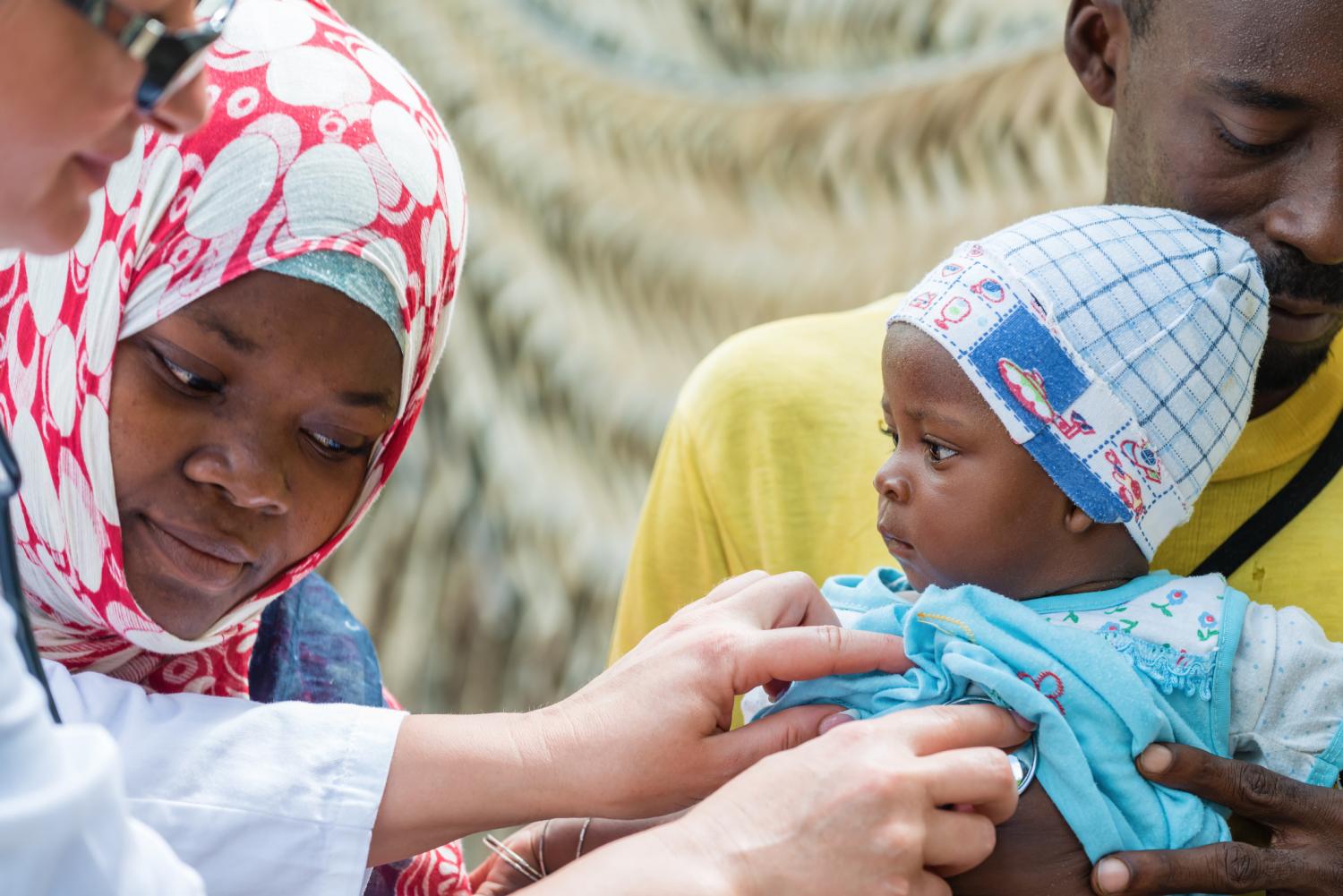The World Health Organization (WHO) issued new guidelines last week that recommend that mass administration of azithromycin be considered for children younger than 1 year in some sub-Saharan countries with high childhood mortality.
The WHO says the intention of the guidelines is to improve childhood survival in these settings and that the evidence suggests the infant lives saved in these settings outweigh the potential harms. But it also acknowledged that the risk of promoting antimicrobial resistance (AMR) is a potential harm that needs to be monitored. It recommended against universally implementing mass azithromycin administration for children in low- and middle-income countries.
The recommendations, issued by the WHO's Guideline Development Group (GDG), are based on the evaluation of evidence on the effect of mass distribution of azithromycin in children. Key to shaping the assessment were the results of three randomized clinical trials conducted in Ethiopia, Malawi, Niger, Tanzania, Mali, and Burkina Faso—countries with high under-5 mortality rates. Altogether, the studies involved 230,000 children.
The first of these trials, conducted in 2006 and 2007 in Ethiopia, found that mass distribution of azithromycin through a program to eliminate trachoma, a bacterial eye infection, nearly halved the risk of death in children ages 1 to 9. The second, known as the MORDOR (Macrolides Oraux pour Réduire les Décès avec un Oeil sur la Résistance) trial, found that twice-a-year doses of azithromycin in children ages 0 to 5 was associated with a 14% reduction in childhood deaths in rural communities in Niger, Tanzania, and Malawi, though the most significant impact was in Niger.
The third trial, which assessed mass distribution of azithromycin in combination with seasonal malaria preventive treatment in Mali and Burkina Faso, found no reduction in the composite outcome of hospitalization or mortality.
The intervention had no effect, in any of the studies, on acute respiratory infections, malaria, or hospitalizations but did result in a lower incidence of diarrhea in children 1 to 18 months. Analysis of data on the potential impact on AMR was less clear. Adverse effects were found to be mostly gastrointestinal.
In view of the inconsistencies in the mortality results and the potential for resistance, the GDG recommended against universal mass distribution of azithromycin for children younger than 5. But because subgroup analyses of the largest trial (the MORDOR trial) showed a greater beneficial effect in children younger than 1, and the overall risk of death was substantially higher in infants than in older children in all of the studies, the GDG concluded that mass distribution of azithromycin should be considered for children ages 1 to 11 months in sub-Saharan African settings where infant mortality is greater than 60 per 1,000 live births or under-5 mortality is greater than 80 per 1,000 live births.
"The GDG considered that the evidence for reduction of childhood mortality was particularly compelling in the case of infants under 1 year of age," the WHO said. "Their rationale for this narrow age range was that the intervention should be targeted at the subgroup in which the greatest benefit was observed, and its application limited to a smaller number of individuals in the community."
The GDG is recommending continuous monitoring of infant and child mortality and AMR if countries go ahead with the intervention, and the WHO says locally appropriate consent should be sought. The guidelines will be revised within 2 to 3 years based on review of additional data.
Targeted approach is untested
Thomas Lietman, MD, an ophthalmologist at the University of California at San Francisco who was involved in the trial in Ethiopia and the MORDOR trial, said he thinks the rationale for the WHO's targeted approach is clear: the best-observed effect in the MORDOR trial was among 1- to 11-month-olds, infants are the highest-mortality age-group in sub-Saharan countries, and excluding children ages 1 to 5 will likely select for less antibiotic resistance.
But he also pointed out that biannual distribution to children ages 1 to 11 months has never been tested and that concerns about the emergence of AMR should be put into context. For example, trachoma programs, which administer azithromycin to all children older than 6 months and likely exert a higher selection pressure for resistance, have not promoted clinically significant levels of azithromycin resistance.
"Trachoma programs have given nearly a billion doses so far without a resistance crisis," Lietman said in an email.
In addition, he noted that evidence from an offshoot of the MORDOR trial conducted in Niger—evidence not included in the GDG review—indicates some emergence of resistance but not as much as has been associated with trachoma prevention programs.
Lietman said what struck him most was how quickly the WHO issued the guidelines, given that much of the evidence is so recent.
"Largely based on a trial published in 2018, the WHO committee met in early 2019 and issued conditional guidelines in 2020," he said. "That's extremely fast, and speaks to the importance of reducing childhood mortality now, rather than waiting for another decade of studies."






















